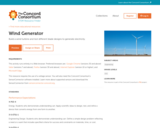
Learn about the diverse group of passerines which we often call "songbirds." Millions of people worldwide identify themselves as bird-watchers and love spending time outdoors watching birds, whether on intense birding expeditions, or simply watching birds in their own backyards. But birds are under pressure and are presented with many human-caused dangers in their lives. Learn how our daily behaviors impact birds all over the world and learn what you can do to help songbirds.UNTAMED looks at the wild and often perilous world of wildlife, as seen through the eyes of the patients of the Wildlife Center of Virginia, a non-profit teaching and research hospital for native wildlife.
- Subject:
- Career Connections
- Health and Medical Sciences
- Living Systems and Processes
- STEM/STEAM
- Science
- Material Type:
- Lesson
- Visual Media
- Author:
- Trish Reed
- Date Added:
- 04/22/2020
